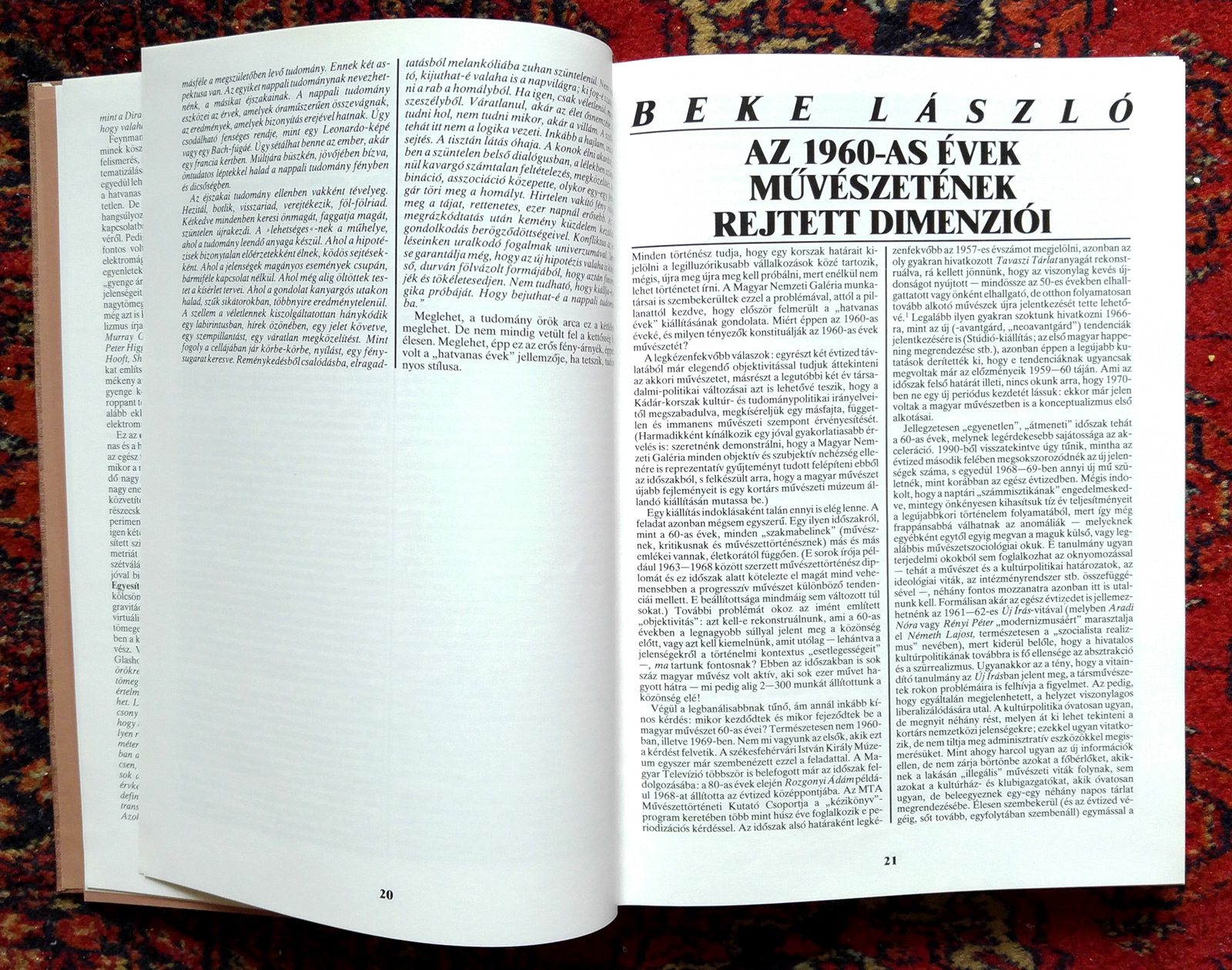The monumental exhibition, accompanied by a thick catalogue of essays and interviews, was curated by three prominent staff members of the Hungarian National Gallery. Their goal in the retrospective was to give a comprehensive overview of those progressive (modernist, avant-gardist) tendencies, from an art historical vantage that were not really present in the official exhibitions of the period.
The exhibition organizers selected pieces from the sixties belonging to the new tendencies mentioned in the subtitle of the show—the “hidden dimensions” revealed in the catalogue essay of László Beke—and presented them in an iconographic-thematic arrangement. Although the majority of the works were related to avant-gardist endeavors (like those of Péter Donáth, Miklós Erdély, Gyula Konkoly, Dóra Maurer, Gyula Pauer, Péter Türk, Tamás Szentjóby), the notion of hidden dimensions was interpreted to allow for “third way” modernist masters to appear in the selection as well, like Béla Kondor and Tamás Vígh.
According to critics, the arrangement of the productions of several generations, based on stylistic tendencies, generated sometimes unexpected, other times experimental collisions, differentiated even in relation to avant-gardism. Works could appear in the selection based not only on their individual merit, but on their relationship with other works, causing some achievements to be played down, while representing others beyond their merits.
More than two-thirds of the works were selected from the Contemporary Collection of the Hungarian National Gallery, so some of the critics noted that not all participants could “bring” their “best form.” On the other hand, it is refreshing that the exhibition legitimized not only the works and the artists, but also often criticized the former collecting policies of the institution. Although the works were not acquired at the time of their creation, it was manifest that the curators made many efforts to fill the earlier gaps.
According to one of the reviewers of the monumental exhibition, the main condition of selection was to publicly demonstrate the strength and value of works previously kept in the shadows. At the same time, it would have been a greater challenge to display not only the works downplayed during the previous era, but those favored by past official cultural policies: to make possible by comparison an “Ordeal of the Bier,” based only on art historical considerations.

